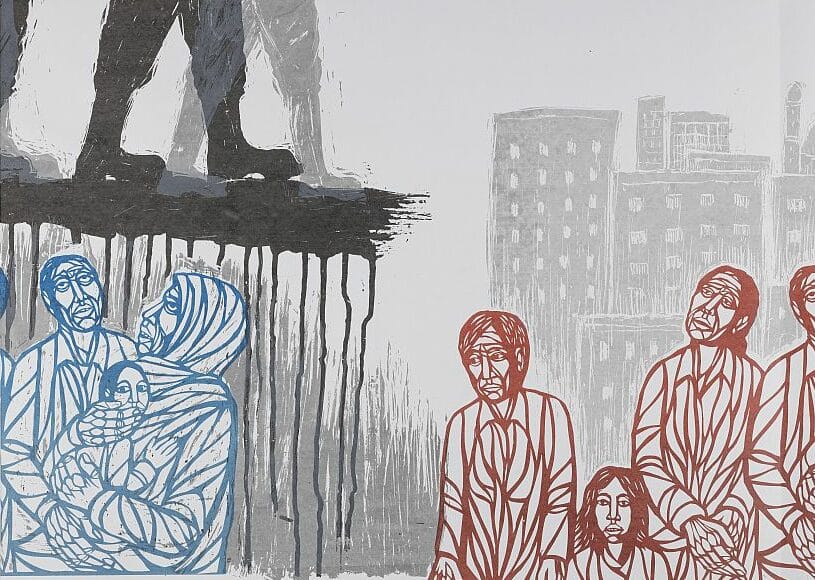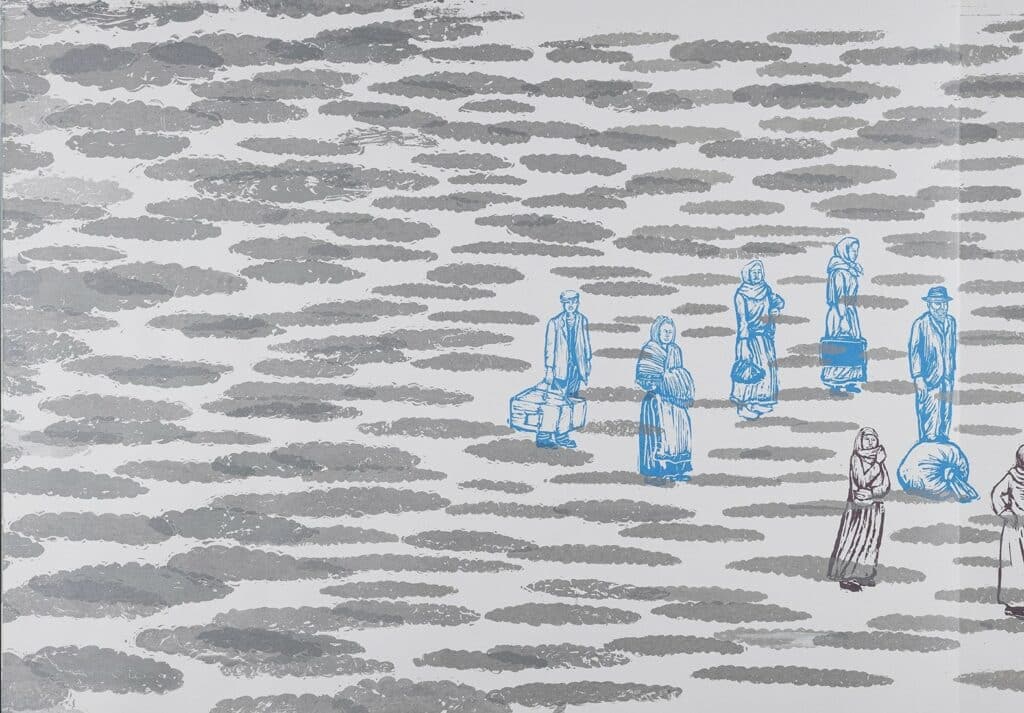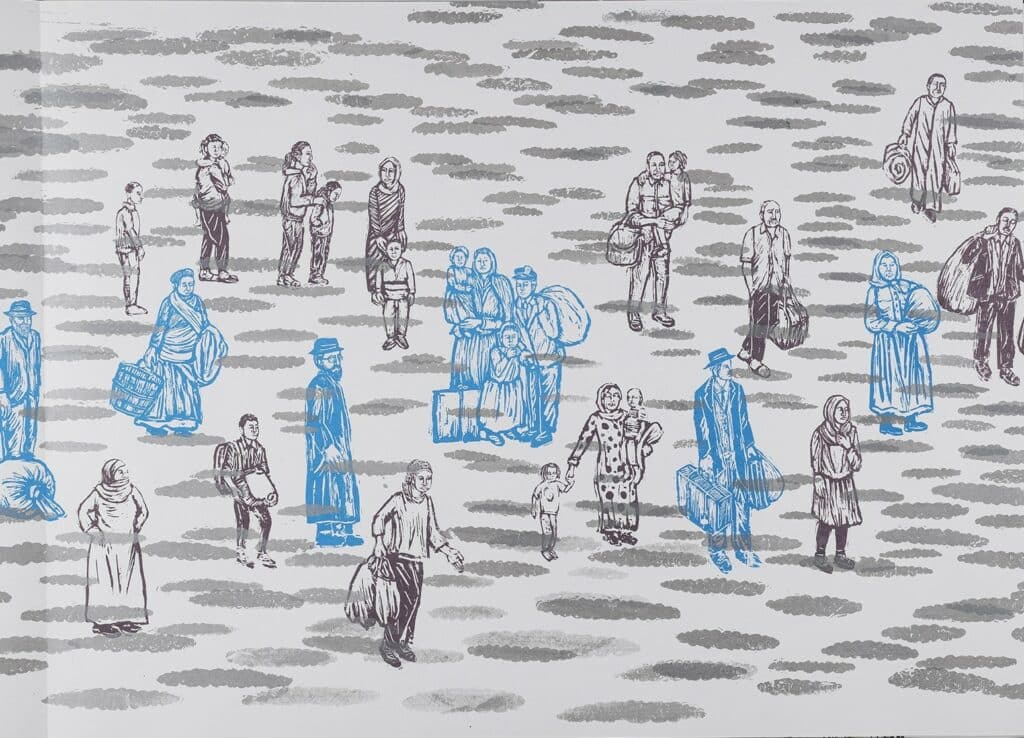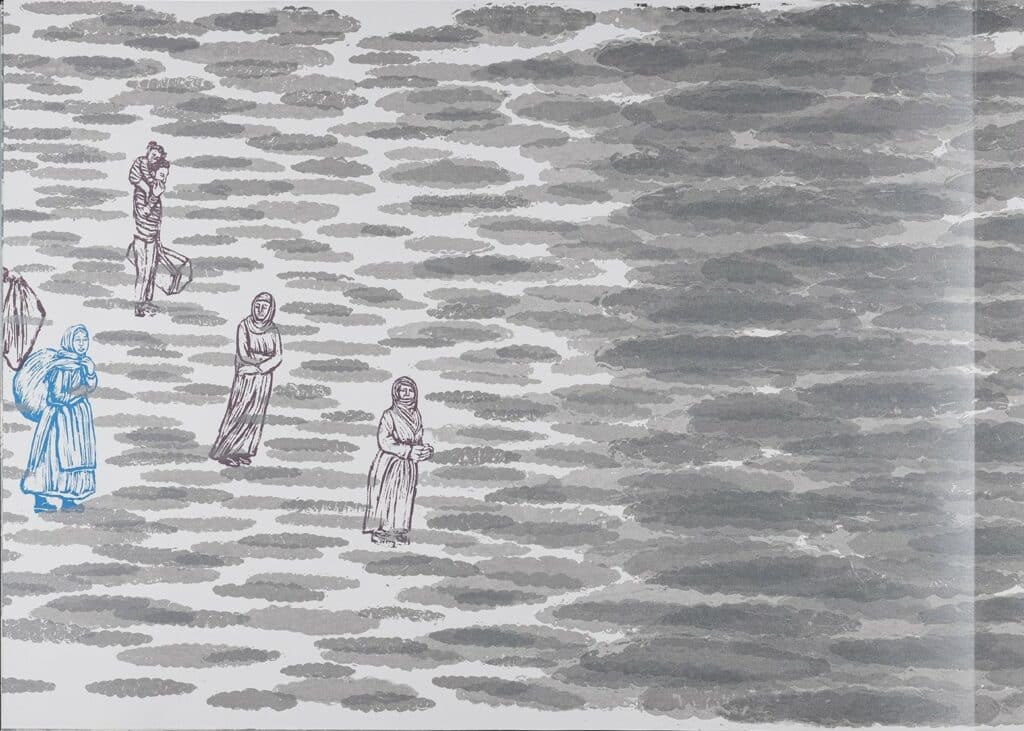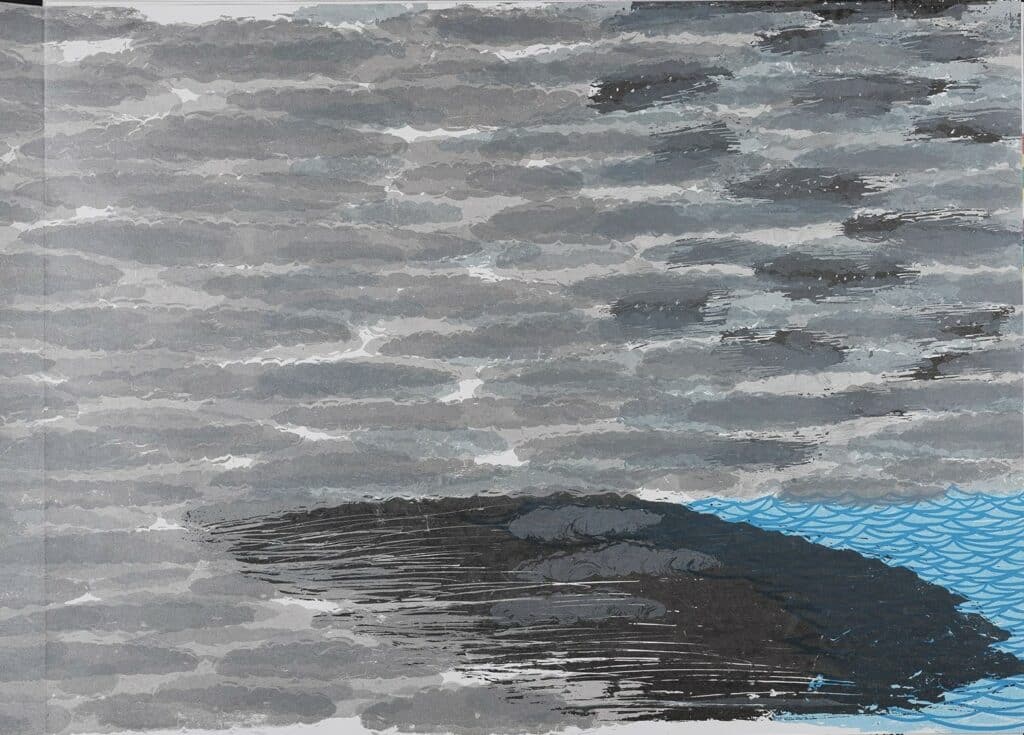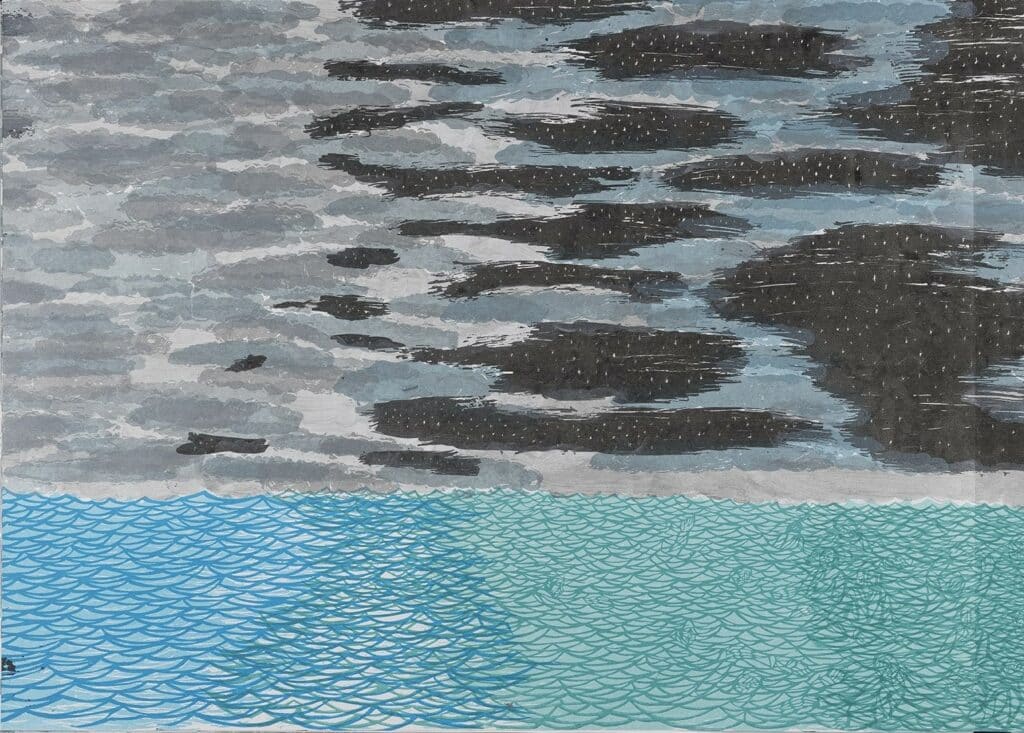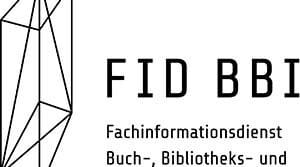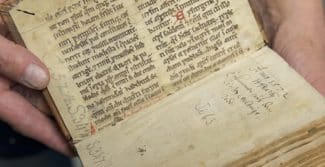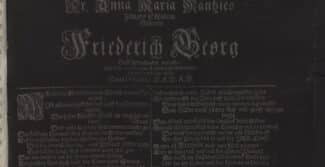20 July 2022
It is often forgotten that artist’s books dealing with war and its consequences, sometimes rendered in the form of threnoi – songs of mourning and lament – are almost as old as the form itself. A well-known example of this is the dirge that emerged from the collaboration – and friendship – between Pablo Picasso and poet Pierre Reverdy. Written in 1944/45 and published by Tériade in Paris in 1948, Chant des morts immortalised the suffering of the Second World War by bringing together Reverdy’s handwritten text and Picasso’s bright red dots and linear brushstrokes in a near-magical dialogue. The Herzog August Bibliothek acquired a copy of the book in 1965, during the ‘Kästner era’.
In his 2019 artist book Erik Ruin, born in Detroit in 1978 as Erik Reuland, also brings together experiences of war, displacement and genocide – but his choice and combination of media is very much his own. A Threnody for the Dispossessed, which was purchased by the Herzog August Bibliothek two years after it was published as the first of ten hand-signed copies, comprises a more than 18-metre-long stretch of paper with 30 screen-printed images in an accordion fold. Each picture page is accompanied by the voices – the experiences – of refugees and survivors, which can be listened to with the help of the USB memory stick included. Ruin himself interviewed women and men from the Middle East and South America and also integrated recordings of conversations with victims of Nazi violence.
The accompanying music was composed by Julius Masri, who comes from Lebanon but, like Ruin, lives and works in Philadelphia. In the companion booklet, Ruin describes the multimedia chorus of voices that emerges as a ‘wailing ode’, which at the same time is a reference to his own performance practice. The booklet contains transcriptions of all the sound recordings.
Klicken Sie auf den unteren Button, um den Inhalt von w.soundcloud.com zu laden.
The pictures themselves generally use a simple formal language that is reminiscent of woodcuts but still maintains a connection between the depicted violence and its historical points of reference – extending to the figures of drowned people, whose bodies can be made out as fragmented, wraithlike forms in the sea. Art historian Viola Hildebrand-Schat once aptly described this as the language of Épinal prints. An observation that applies to many of Ruin’s works – and which is even applicable to his artist’s book Letter from Isolation, also from 2019, which is based on Ulrike Meinhof’s letters from the ‘Dead Wing’ of the Cologne-Ossendorf prison – an observation, moreover, that undoubtedly reflects the artist’s interest in puppetry, shadow theatre and silhouettes.
A Threnody for the Dispossessed was created as part of a transcultural project at Swarthmore College, Pennsylvania, which brought together book artists and poets from around the world. The artist’s books that emerged from this project are now on exhibition in such places as Philadelphia and New York.
